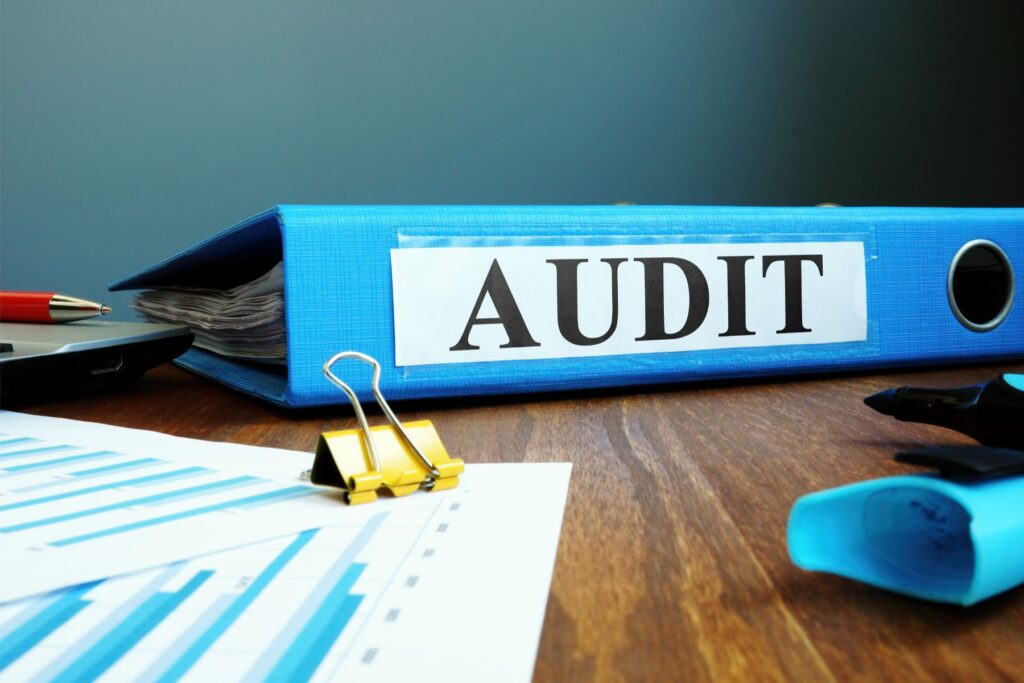For new motor carriers, and really any motor carrier, understanding what it takes to pass a safety audit is key. You’ll want to take a few proactive steps if you are a new carrier, but even if you have been in operation for a while, it starts with understanding audits in general.
In this post, we’ll break down what DOT safety audits are, what happens if you fail one, and what you can do to ensure your organization has what it needs to pass with flying colors.
What is DOT Safety Audit?
According to the FMCSA, a safety audit is a review of a motor carrier’s records, designed to verify that a carrier has basic safety management controls in place to ensure compliance with Federal Motor Carrier Safety Regulations, and Hazardous Materials Regulations.
Since the FMCSA has made it very clear that workplace safety is of the highest importance, failure to follow proper procedure can lead to a loss in FMCSA registration and a heap of fines. These are consequences best avoided, which is why it’s so important to have documentation readily available.
What Should You Expect During a DOT Safety Audit?
First of all, safety audits and safety inspections are not the same. DOT safety audits are performed less frequently and assess your organization’s overall compliance with regulations and safety protocol.
When it comes to DOT inspections, these may fall in 8 different categories, like a level 1 DOT inspection, completed roadside by a safety officer. These inspections typically also examine vehicle-related items like Cargo Securement and others.
New to Trucking? Expect a New Entrant Safety Audit
As a new motor carrier, you can expect to undergo a safety audit within the first 12 months of operation as part of the new entrant program. These are commonly referred to as new entrant safety audits.
While new entrant audits and standard safety audits can be stressful and time-consuming, they are important and should be taken seriously. By aiming to comply with safety regulations to pass these audits, you not only avoid costly fines, but you ensure that your workplace is safe for you and your employees.
DOT safety audits are also excellent opportunities for growth, since they pinpoint specific safety risks to correct, identify your fleet’s strengths and weaknesses, and give you information to eliminate unsafe practices.
How to Prepare for a DOT Safety Audit
Keep in mind, many consulting firms will be able to help you with driver qualification files, handle drug screens, as well as anything else you need for this type of DOT safety audit. One of the biggest advantages of using a consulting firm to prepare is that you will be able to stay proactive, and make sure you have the information you need at all times.
If you are expecting a new-entry audit, you should receive an email from your state letting you know that you are subject to an audit, and what you need to have on file in preparation.
These items include:
- Driver list (Name, date of hire, date of birth, etc.)
- Vehicle list (Trucks, VIN #’s, Registration cab card)
- Proof of insurance
- Medical certificates for drivers
- Copy of driver’s motor vehicle report
- Hour of Service records
- Vehicle inspection history (annual)
- Drug and alcohol testing records
On-Site vs Off-Site Safety Audits
Off-site audits have become increasingly popular for numerous reasons as we discussed in our DOT Audits webinar. Expect off-site audits and compliance investigations to continue to be a part of the new normal due to how cost-effective they are.
If your audit is conducted in person, it will be carried out by an FMCSA-certified auditor at your place of business. If done remotely, you’ll submit relevant documents to FMCSA online or via mail or fax.
Regardless of which audit you’re chosen for, you’ll be notified of the type to expect by phone or mail.
What Violations Can Cause You to Fail a DOT Safety Audit?
While some violations are cause for concern and will be addressed during a DOT safety audit, others are entirely unacceptable all will cause you to automatically fail the safety audit. Here are a few to pay attention to:
1. Alcohol and Drug Violations
It’s important that your company is performing regular and random alcohol and drug testing, but conducting these tests is not enough. No matter how good a driver is, you should never employ a driver who refuses a required alcohol or controlled substances test.
It may be wise to task an outside agency with performing drug tests to take this compliance burden off of your staff, since they will be able to keep track of all of this information that you will eventually need.
2. Driver Violations
Your drivers are continuously on the road for long hours, around other motorists and pedestrians. It’s important that they are alert, healthy, and up to the task. Driver violations that ensure a failing grade for a safety audit include:
- Using a driver without a proper commercial driver’s license
- Using a driver who’s medically unable to perform required tasks
- Using a driver with a revoked, suspended, or canceled CDL
3. Operator Violations
You and your employees need to pay attention on and off the roads. For instance, safety audits will result in immediate failure if you’re found to be operating a motor vehicle without securing the required level of insurance or failing to require drivers to keep hours-of-service records (logbooks).
4. Repairs and Inspection Violations
Your drivers need to be in tip-top shape, but your vehicle safety is also of top priority.
Operating a vehicle that’s not annually inspected, operating a vehicle that’s declared out-of-service (OOS) for safety deficiencies before repairs are made, or failing to perform OOS repairs reported in driver-vehicle inspection reports (DVIRs) will result in immediate failure.
Facing the Consequence: Safety Violation Fines
No one wants to pay out of pocket for fines, but they’re an effective way to help fleet managers and owners remember that safety comes first. If your drivers are operating without proper licensing, you could face fines from $250 up to $5,591. Denying access to documentation could cost you up to $1,239 in fines per day, up to $12,383.
Falsifying records is not only extremely dishonest, but it will result in fines up to $3,760. And, last but not least, violations that involve hazardous material can cost you up to $79,976 in fines.
So, long story short, it pays to be safe.
What Happens If You Fail a DOT Safety Audit?
You should receive your safety audit results within 45 days. If you fail a DOT safety audit, you’ll receive a detailed explanation as to why you didn’t pass and the requirements needed to formulate a corrective action plan (CAP). Your CAP must explain the action you will take to address the violations identified during the audit. Failure to submit your CAPs to the FMCSA within the number of days specified on your failure notification will result in loss of FMCSA registration.
If mistakes were made during your audit, you won’t be left to guess what they were. You’ll always be notified of any and all violations found while the safety audit was conducted. You’ll also be given an explanation of how to correct your safety problems.
For more information on Safety Audits, sure to refer to the FMCSA Safety Audits page.
What Happens After You Pass a DOT Safety Audit?
Assuming you pass your new entrant safety audit, there will be a monitoring period of 18 months as part of the new entrant period. Assuming no violations are found, you will be granted what’s called permanent operating authority.
What is Permanent Operating Authority?
Permanent operating authority status essentially proves that your organization is qualified as a motor carrier for the transport of goods or passengers for-hire. There is also a temporary operating authority status, that can be issued to carriers in the event of natural disasters and other emergencies.
Staying Prepared
At Whip Around, we take safety very seriously, which is why we’ve created software that helps you take control of your fleet inspections and maintenance. With customized vehicle inspection forms, the health of your fleet never has to be in question, with real-time data available to managers regarding the status of daily vehicle inspections and maintenance.
To see how Whip Around can take the headaches out of your vehicle inspection and maintenance processes, request a demo today.






